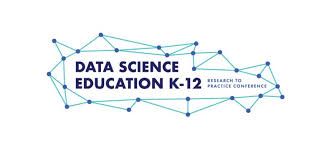Silent Killers: How Flawed Road Engineering Claims Thousands of Lives
Science
2025-04-18 19:56:26Content

When it comes to urban mobility and street design, you might assume that traffic engineering decisions are driven by rigorous scientific research. However, the reality is far more complex and surprising.
Despite the critical importance of transportation infrastructure, many traffic engineering choices are still based more on traditional practices and intuition rather than solid, evidence-based research. This disconnect between scientific knowledge and practical implementation can have significant consequences for urban safety, efficiency, and livability.
Researchers have long observed that many traffic engineering strategies are rooted in historical precedents and conventional wisdom, rather than comprehensive data analysis. While engineers are increasingly recognizing the value of empirical studies, the translation of research findings into actual policy and design remains slow and inconsistent.
Key challenges include:
• Limited funding for comprehensive research
• Resistance to changing established practices
• Gaps between academic research and practical application
• Complexity of implementing new, data-driven approaches
The good news is that a growing movement of transportation professionals is pushing for more evidence-based decision-making. By embracing data, technology, and interdisciplinary research, cities can develop smarter, safer, and more efficient transportation systems that truly serve community needs.
As urban populations continue to grow and evolve, the need for research-driven traffic engineering has never been more critical.
Unmasking the Hidden Flaws: How Traffic Engineering Decisions Deviate from Scientific Rigor
In the intricate world of urban infrastructure, traffic engineering stands as a critical discipline that shapes our daily commutes, safety, and city landscapes. Yet, beneath the surface of seemingly rational decision-making lies a complex web of challenges that challenge the very foundation of evidence-based planning.Revealing the Critical Gaps in Transportation Infrastructure Design
The Illusion of Scientific Precision
Traffic engineering has long been perceived as a discipline rooted in mathematical precision and empirical research. However, a deeper investigation reveals a startling disconnect between theoretical frameworks and practical implementation. Municipal planners and transportation experts often rely on outdated methodologies, legacy approaches, and intuitive assumptions rather than comprehensive, data-driven analysis. The complexity of urban mobility demands a more nuanced approach. Traditional traffic modeling frequently fails to account for the dynamic nature of modern transportation ecosystems. Emerging technologies, changing commuter behaviors, and evolving urban landscapes render many existing engineering paradigms obsolete.Systemic Limitations in Research and Implementation
The current infrastructure development process suffers from significant structural limitations. Research funding, bureaucratic inertia, and institutional resistance create substantial barriers to innovative approaches. Many traffic engineering decisions are still influenced by historical precedents rather than cutting-edge scientific methodologies. Local governments and transportation departments often operate within constrained budgetary environments, which limits their capacity to invest in comprehensive research and advanced modeling techniques. This financial constraint perpetuates a cycle of incremental improvements instead of transformative solutions.Technological Disruption and Data-Driven Transformation
Emerging technologies like artificial intelligence, machine learning, and real-time data analytics are gradually reshaping the landscape of traffic engineering. Advanced sensor networks, predictive modeling, and sophisticated simulation tools offer unprecedented insights into urban mobility patterns. These technological innovations enable more granular understanding of traffic dynamics, pedestrian behaviors, and infrastructure performance. By leveraging big data and sophisticated algorithms, cities can develop more responsive and adaptive transportation systems that prioritize safety, efficiency, and sustainability.Human Factors and Psychological Dimensions
Beyond technical considerations, traffic engineering must increasingly recognize the profound psychological and behavioral dimensions of urban mobility. Human decision-making, risk perception, and cultural factors significantly influence transportation infrastructure effectiveness. Interdisciplinary collaboration between engineers, psychologists, urban planners, and sociologists can unlock more holistic approaches to traffic management. Understanding the intricate interactions between human behavior and infrastructure design represents a critical frontier in transportation research.Global Perspectives and Comparative Analysis
International case studies reveal dramatic variations in traffic engineering approaches across different cultural and geographical contexts. Successful models from progressive cities worldwide offer valuable insights into innovative infrastructure development strategies. Cities like Copenhagen, Singapore, and Amsterdam demonstrate how integrated, human-centric approaches can revolutionize urban mobility. These examples underscore the potential for transformative change when evidence-based research genuinely informs engineering decisions.Future Trajectories and Emerging Challenges
The future of traffic engineering demands a radical reimagining of existing paradigms. Climate change, autonomous vehicles, shared mobility platforms, and evolving urban demographics will necessitate unprecedented levels of adaptability and innovation. Interdisciplinary research, continuous learning, and a commitment to scientific rigor will be paramount in developing next-generation transportation infrastructure that is resilient, sustainable, and genuinely responsive to human needs.RELATED NEWS
Science

Rocket Science Meets Classroom: How NASA is Transforming Data Skills for Young Learners
2025-04-09 18:28:28
Science

Breaking: AquaSculpt's Secret Formula Exposed - Experts Reveal Breakthrough Ingredient Analysis
2025-04-11 18:11:00
Science

Monday Morning Bliss: The Surprising Psychological Hack That Boosts Your Happiness
2025-02-27 11:00:00





